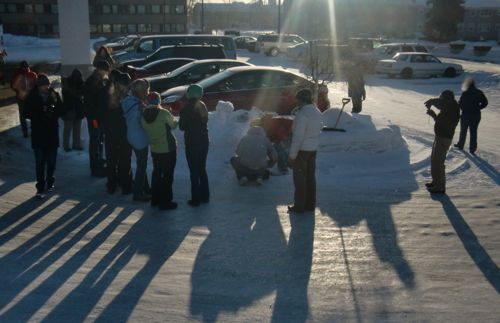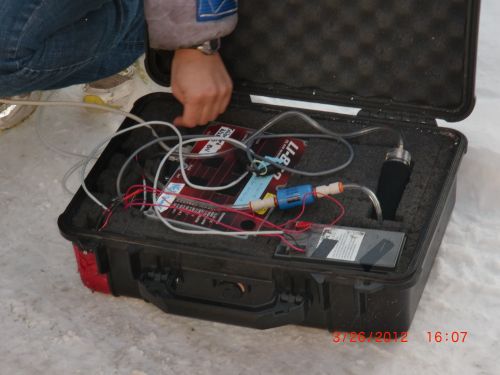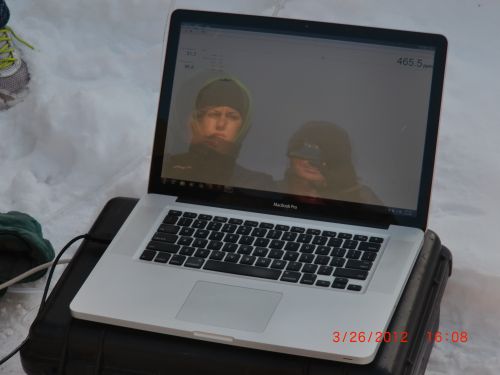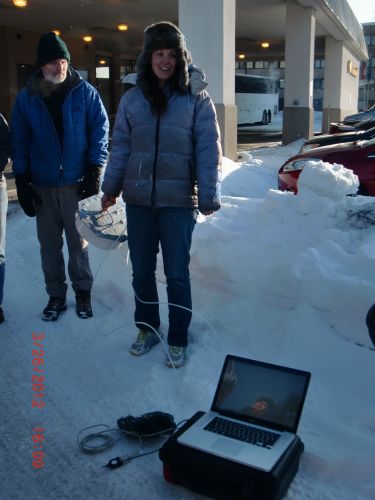Carbon Cycling in the Arctic TundraA treeless area between the icecap and the tree line of arctic regions, having a permanently frozen subsoil and supporting low-growing vegetation such as lichens, mosses, and stunted shrubs.
It was 20 below this morning, and the team bundled up right off the bat to gather outside with PolarTREC Research Elizabeth Webb from the University of Florida. Elizabeth will be joined by PolarTREC Teacher Tom Lane next week as their team heads to Healy, Alaska to study carbon cycling in the warming tundra.

Tom and Elizabeth dug a nice little snow pit outside to expose some bare soil. They then placed a carbon dioxide gas sensor over the soil. Their study on the Alaskan tundra aims to investigate the differences in storage of carbon through photosynthesis during the spring/summer months, and release of carbon through respiration during the fall/winter months. Observational data like this on the cycling of carbon in Polar Regions is vital for researchers to have in order to make accurate climate change projections.




Want to learn more? Follow along on the Virtual Base Camp as Tom heads out to the frozen tundra in just a few days to embark on his expedition!
SatelliteAn object placed in orbit around the earth to collect or transmit information. Phone Training
Later on Roy Stehle from CH2MHill Polar Services joined us. Our group received training from Roy on the Iridium SatelliteAn object placed in orbit around the earth to collect or transmit information. Phone Communication system, and how to use sat-phones in the field to place calls and upload content to our journals. Then it was time for testing, and each of us placed a practice call to apply our new skills. I decided it was the perfect time to check-in back home at school, so I placed a call to Vice Principal Tom Mollgaard!



Comments